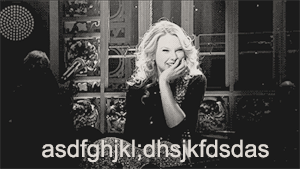Freedom of Religion includes ours!
We do not judge, do not sacrifice living things or worship the devil. We in fact do not recognize the existence of a devil. Our Religion is based on nature, and that everyone is responsible for their own actions.
Peace, love, and tolerance for everyone should be encouraged everywhere!
Blessed Be!
What Is A Witch?
A witch is the name adopted by men and women who practice magick within a broadly agreed belief system or code of ethics. This code of ethics permits the manipulation, concentration, focus and release of magickal power, to bring about or accelerate change or to maintain stability and protect the wellbeing of the planet and all its creatures.
Most witches are Wiccan, one of the most popular forms of witchcraft worldwide today, though not all Wiccans are witches. The word witch is derived from the Anglo-Saxon wicce (masculine) and wicca (feminine) and Old Norse vitki and vitka.
Not all people who work with magick, the practice of witchcraft, call themselves witches. For many, the very act of practicing good magick does imply an acceptance of the witchcraft beliefs and faith. Indeed, casting spells and carrying out rituals in spell books, is limiting both magickally and spiritually. But just as people who haven’t been to church since childhood say prayers in times of crisis, so Spellcasting obligations of magick, rather than serve merely as a psychic shopping list.
What do witches believe?
As in any faith, there are many variations in emphasis, but the majority of witches acknowledge a higher creative force in the person of the Goddess.
I am convinced we are all spiritual beings in a physical body. This spiritual form made of light, a perfected version of the physical body at its peak, can be seen clairvoyantly as the rainbow aura or energy field extending beyond the physical body. It enters the infant some time before birth (or some say at conception) and has been reported by numerous observers as leaving the body after death as spheres of light or as a being made of light.
This spiritual entity or energy contains a divine spark, part of what in witchcraft is called the Goddess. Indeed in the Charge of the Goddess, attributed to Doreen Valiente, the goddess speaking through her High Priestess says:
From me all things proceed, and unto me all things must return. Before my face, beloved of gods and of men, let thine innermost divine self be enfolded in the rapture of the infinite.
Some picture the Goddess as a force or energy, who is manifest in terms within human understanding, as the Great Goddess who appears in the mythology of many lands. For example, the Hindu Mahdevi, creator of universe, oversees the main cosmic functions, creation, preservation and destruction. The three Supreme Gods of modern Hinduism, Brahma the Creator, Vishnu the Preserver and Shiva the Destroyer, assume these functions, it is said, by her will.
From the all-encompassing undifferentiated Goddess force that contains both male and female energies emanates all creation. In mythology, from Australian Aboriginal to the Ancient Babylonian and Classical Greek and Roman, the goddess is seen giving birth to creation and sometimes dying during the process, so that all that is created is made from her body. In this form, the Cosmic goddess is also equated with Mother Earth herself from whom life came and to which it returns for she embraces birth, death, and rebirth: sound ecology as well as spirituality.
Some of these Goddess figures gave birth to the male who was to become her consort. Gaia is the most famous of the creating Earth Mothers who has given her name to modern green spirituality. She was called variously the deep breasted one, she from whom everything comes, and the first and the last, since she was the daughter of Chaos or swirling darkness. Gaia, it is told, created every living thing, plants, animals, hills, mountains, waters. She did this by embracing the other primordial being that was part of her, Uranus (Ur means to envelop). Gaia then separated herself from Uranus by birthing him and mated with him as Goddess to God. Myth tells he was not the best of fathers or husbands and was eventually castrated by his son Saturn, an equally bad father figure.
The God and Goddess are now separated and she is given a persona, sometimes as Moon Goddess, Earth Goddess and even Sun Goddess in lands as widespread as Scandinavia, the Celtic world and Japan. The male acts as the balancing animus or yang force and in early myths take on aspects of the hunter, the God of vegetation and the protector/avenger. As Neolithic farming developed, he assumed the role of barley and grain sacrifice God.
In this differentiated or more personalized form, the goddess gradually became the Sumerian fertility goddess Innana, the Ancient Egyptian Isis, the Greco-roman Diana and all the other maiden, mother, and crone forms of myth that we will explore. However, the Goddess still retains her greater role, as well as the anima or yin aspects that form the alter ego of the God; for example, Isis to Osiris the Ancient Egyptian resurrection and vegetation god. Therefore in many forms of witchcraft, the Goddess remains supreme in ritual and more powerful than the God power that emanates from her.
I believe that through magick in its widest senses, as a spiritual pathway, we can increase the size and power of our divine spark within us all whether we practice alone as a solitary witch or in a group, and maximize the effect of our spiritual body. In this way we can occasionally and perhaps after many years link in with the supreme Goddess form, as we call the power of a named Moon goddess within us at full moon.
Witchcraft and Evil
Good and evil both exist, as do night and day, darkness and light, creation and destruction. We might almost always aim to do good; but the existence of malice, deliberate harm and physical, emotional and psychic attacks from external sources, as well as our own natural negative feelings at times, are issues that every witch has to deal with. We need to protect ourselves and our loved ones against global and more personally aimed injustices and evil in a way that does not compromise our own integrity but nevertheless is effective. Equally, magick, like any other power, is neutral and can be used for good or evil or the grey areas in between.
Evil is not something that can be totally eradicated and we all contain negative as well as positive aspects as part of our personality. Though we strive to develop the good parts of our character aspects of ourselves, even the mildest mannered person can get angry over injustice: Jesus was furious with the temple moneylenders, according to the Gospels. Despair, resentment and jealousy are normal reactions if we or our loved ones are being abused disregarded or mistreated; they are part of our survival mechanisms.
Destruction is the other side of creation and part of the cycle of existence. As witches we need to wrestle with the mainstream moral dilemmas of the world around and decide if and how we need effectively to respond practically as well as magickally. For instance, we need to do some hard thinking about the terrible havoc BP created in 2010 with the oil spill and wars in the name of saving nations like Iraq from tyranny that can bring their own evils.
If you are angry, resentful or strongly dislike someone who has done you or a loved one harm precisely because you can use magick, this is a time to hold back. Just as after a blazing argument you should not jump in a fast car and roar off down a motorway, so it is not a safe time to cast spells, precisely because with all that negative emotional power you are generating you might do psychological harm, not least to yourself that you will regret in a calmer moment. So talk to a good friend or coven member, dig in the garden or scrub the inside of the cooker until you feel calmer. Cry, yell and yell some more, then when you are calm think about an appropriate practical and magickal response. Wise men and women aren’t wise 24/7, but wisdom can bring restraint from unwise action.
Witchcraft and the Devil
The worst accusation against witchcraft is that witches worship the Devil in the person of the Horned God. Though such accusations should have been left behind in the dreadful three centuries of witch persecutions, this dangerous nonsense still occasionally rears its ugly head in sensationalist, unsubstantiated media reports of infant sacrifices and upside-down crosses.
The word devil comes from the ancient Greek word Diablos, which means accuser. Some have traced the origins of the Judeo-Christian Devil to the Persian Fire religion Zoroastrianism, central to which was the constant war between the spirits of good and evil, Ahuramazda and Angramainyu. Others associate his creation to the demonization of earlier gods when the great monotheistic religion Judaism was created.
This is in contrast to the Oriental and some pre-Christian Western philosophies that see evil as the other polarity of good. Gods of evil, such as Loki in the Viking tradition, were a necessary facet of creation and destruction, both of which are necessary for evolution.
The Devil evolved as a Christian concept that became crystallized by the Romanized early Church Fathers, including Jerome. They were familiar with the pre-Christian Graeco-Roman goat-footed God Pan, who symbolized wildness, and the Celtic antlered Cernunnos, Lord of Animals and the Hunt.
The organized military prowess of the Greeks and Romans and growth of the city states altered the emphasis of the god to a supreme Sky god who was a good soldier and statesman, with the hunter relegated in importance. The Judeo-Christian god was likewise a warrior king and judge with hosts of warrior angels.
It was argued that if God was good, he could not have created evil. Conversely, if he was absolute, no one else could have created it and therefore demons must be angels who became too proud, refused to praise God or insisted on keeping their free will, rather than surrendering it to God. Lucifer, once supreme Angel of Light and Lord of the Seraphim, the highest rank of angels, became fallen leader of the rebel angels. His image subsequently blended over the centuries with the downgraded and demonized horned and hoofed gods such as Pan and Cernunnos.
The Horned deity is a symbol of male power and sexual potency but without the aggressiveness of the warrior image. The God was probably the earliest tribal sacrifice icon of the hunter-gatherer peoples, at the time the deer were rutting. Freud’s Id or instinctive powers are inherent in the Horned God and, like other pre-Christian deities of challenge, wildness and courage will defend the herd even at the loss of his own life. Therefore this aspect of the God of witches is a very positive dynamic and essential one.
Witchcraft in Modern-day life
Though in many lands witchcraft is now accepted more openly, there are still places where clairvoyance and magick are forbidden or certainly disapproved of, especially if a practitioner has children. In Jersey, parts of America and even that most liberal of countries, Sweden, there have been mothers whose Wiccan beliefs have caused serious problems with educational and social services. All the parents I know who practice magick have environmentally conscious, incredibly gentle and kind children who have been brought up to respect every living creature.
You may find that some employers, acquaintances and neighbors have problems with the idea of witches, mainly because of the numerous misconceptions of sensational films and lack of knowledge.
The problem with secrecy and taboos about magick is that it encourages less responsible, power-hungry people to set up more dangerous practices in the name of witchcraft. Young people may buy unsuitable books on mediaeval demonology on the internet, fascinated because of cult television series and frightening films on the occult. This fuels popular prejudice, as well as sending letters to authors and web host websites. That they are concerned parents and teenagers who have become terrified after corresponding with less reputable so-called witches and mediums who tell them they are cursed and ask for money to remove the curse.
All we can do personally is try to encourage awareness of responsible practices of magick. Invite friends and neighbors to share seasonal celebrations and take every opportunity to introduce alternative ideas and to dispel offbeat rumors with gentle humor. Write to the local paper giving the sensible viewpoint when silly stories emerge. Start websites or contribute to forums online. Talk on local radio or to organizations and groups in your locality about the pre-Christian origins of festivals such as Christmas and Easter, and raise awareness of the need to conserve ancient sites.
In conservative or traditionally religious areas this can be an uphill struggle, so don’t put yourself in the firing line if it will make things hard for you, if you will lose your job or if it will make it difficult for your children to be accepted in the local community. Bit by bit, explain plain and simple and by your own life show how wise and responsible witchcraft is. Find gatherings and groups and covens where you can share ideas and organize events and make friends with like-minded people. Use the internet and go online if you work alone.
Things are getting better and witches such as Kate West, the Witchcraft Organization, and Children of Artemis do a great deal of positive media liaison work to dispel rumors that we drink murdered baby’s blood and sacrifice animals. Magazines and newspapers are also increasingly printing serious responsible articles about witchcraft, and pagan festivals attract many interested newcomers who are keen to learn more.
Each one of us, solitary or as part of a coven, is a teacher of tomorrow’s witches and can one day make magick, if not mainstream, at least an acknowledged form of spirituality.
Witchcraft and Christianity
A number of practitioners have problems reconciling witchcraft with Christianity or other orthodox religions. There is no doubt that conventional religion does frown on witchcraft, in spite of increasing acceptance of the Goddess in Christianity and Shekinah in Judaism. Of course, we know that Christian festivals were grafted on to pre-Christian celebrations and that Jesus was not born on 25 December. We also are aware that almost every healing ancient well, dedicated once to the Mother Goddess under her many names, to the ancient Irish Mother Anu or Brighid the Celtic triple goddess, was Christianized and rededicated. The Mother Goddess wells became Lady Wells for the Virgin Mary, Anu wells became St. Anne, the grandmother of Christ, and Brighid wasters became Bride Wells, sacred to St. Brigit or St. Bride. They usually also acquired a brand-new Christian miracle to explain the apparently sudden appearance of water that had in fact been used for rituals and healing for hundreds or even thousands of years.
In many ways, witchcraft is more morally accountable than Christianity because you can’t just confess and be absolved, but must carry and where possible put right your bad deeds and words in this lifetime (and some believe in subsequent lifetimes).
(some information is from Cassandra Eason's book A Year and a Day in Magick Which can be found here)
My Review: 4 Stars
This book was so good and I cant wait for the movie! So here is a nice giveaway that i'm doing for this book! So click here and enter! So as for a review. The book was great, small, and funny. The only thing that I had a real issue with the following. First was the use of the F word every 5 seconds and the Second was the Zombie sex. YES Zombie Sex. I really didn't need that! Other than that the book was great!













 Over the next decade,
Over the next decade, 















